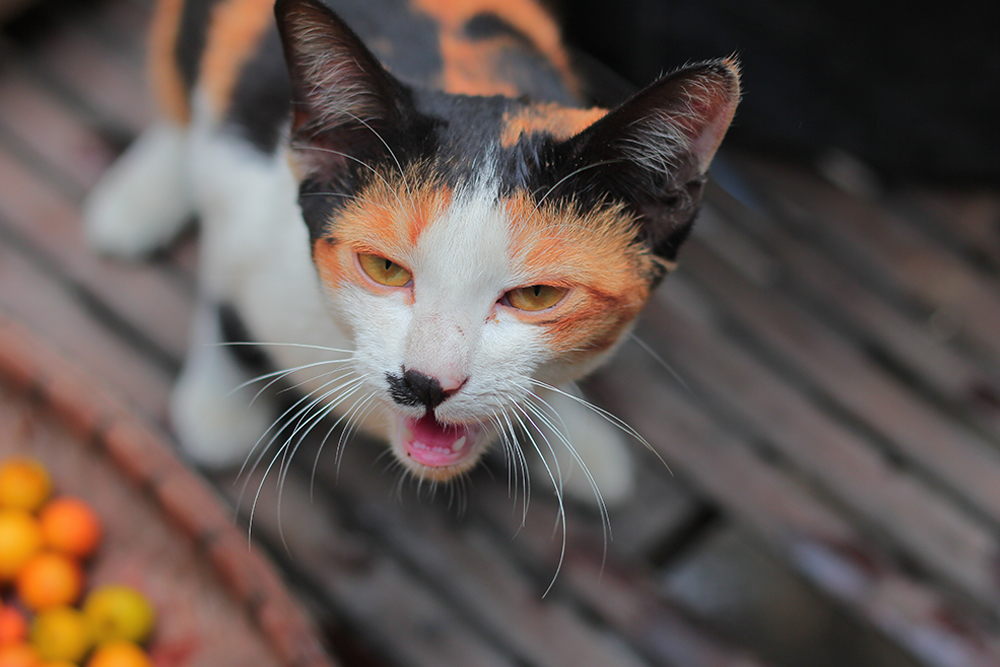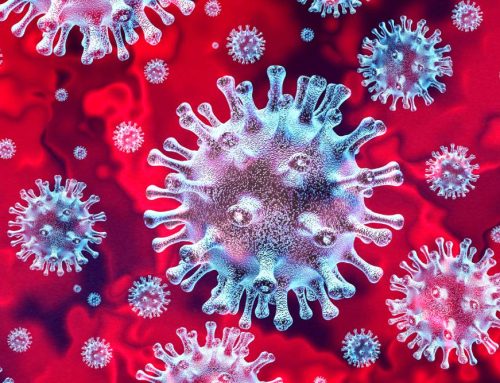Cats and Hairballs: Causes and Remedies
You might know what it’s like. Your quiet, regal, self-composed feline suddenly crouches and stretches her neck, body convulsing, and starts making horrible hacking, wheezing and gagging noises. After much ado, she successfully coughs up a nasty wad of……hair. It’s a trichobezoar – from the suffix tricho, meaning “pertaining to hair” and the word bezoar, meaning “a mass trapped in the gastrointestinal system.” Yup, that’s the technical term for the wad of undigested hair that your cat has just delivered into the world, moistened by digestive fluids. Yippee. Get a rag.
What is a Hairball?
Trichobezoars are commonly called hairballs. And although hairball is easy to say, hairballs are rarely ball-like in shape. They are in fact, typically slender and elongated – kind of like a hairy sausage. That’s because they take on the shape of the esophagus as they pass from the stomach to the mouth. They can be small, maybe only an inch long. But they can also be pretty large, up to 5 inches in length. Because of their shape and size, they can sometimes they can look a little like feces. But they don’t smell like feces. They have a mild bile-ish smell. They’re also not typically the color of feces, they’re usually the color of your cat’s fur.
The Development of a Hairball
How hairballs develop is not a mystery. It all has to do with grooming. Your cat grooms herself by licking her fur and in the process, she ends up swallowing loose hair. This happens because the center of a cat’s tongue is covered with small, backward-facing spines called filiform papillae. You can feel these papillae when your cat gives you a rough kiss. These spines serve several functions. Because the hooks are backward facing, they help to hold prey in the cat’s mouth. They’re also used to rasp and scrape meat from the bones of a kill. In addition, they function like a built-in comb which helps to separate hair, distribute oils, and remove loose fur and dirt from a cat’s coat. Unfortunately, these papillae are also why it’s dangerous for cats to play with string, yarn, and ribbon – as these items get caught up on the papillae and end up being swallowed. These long, linear objects can be deadly when they enter the intestines.
During grooming, excess hair is pushed down the cat’s throat just like string and yarn. It ends up in the stomach. The majority of swallowed hair eventually passes safely through the entire digestive tract where it is excreted in feces. But some of the hair remains in the stomach where it gradually accumulates and forms a disagreeable wet clump. The resulting discomfort eventually causes your cat to vomit in order to propel the hairball out of the stomach.
Who Gets Hairballs?
Kittens and young cats are less likely to develop hairballs than older cats. This is probably because older cats are likely to spend more time grooming their coats. Longer haired cat breeds, like Persians and Maine Coons, are also more likely to develop hairballs. The time of the year is also a factor. Hairballs are more common in seasons when cats are actively shedding their coats.
When to be Concerned About Hairballs….
Much of the time, hairballs aren’t particularly harmful. Some cats upchuck a hairball every week or two. Some cats never seem to have the problem at all. But if a cat is lethargic, refusing to eat for more than a day or so, has had repeated episodes of unproductive retching (trying to vomit and nothing’s coming up), and/or appears to be constipated, you should consult your cat’s veterinarian.
It’s not particularly common, but it is possible for a hairball to pass from the stomach to the small intestine, which can create a potentially life-threatening blockage in the digestive tract. It takes an exam, bloodwork and xrays to diagnose an intestinal blockage. If a blockage is detected, there are several options. If the obstruction is not excessively large, most often the cat will receive several days of IV fluids and laxatives to promote movement of the hairball through the digestive tract. If this type of supportive care is unsuccessful, surgery may be the only way to remove the hairball.
It’s important to note that while vomiting is a classic symptom of hairballs, coughing is not. Hairballs do not cause respiratory symptoms. If you notice your cat is coughing more than usual, something is irritating her throat, airways, or lungs and a visit to the veterinarian is warranted.
What Can be Done About Hairballs?
Most of the time, hairballs aren’t at all life-threatening. They’re annoying. It’s not fun for your cat to have to expend the energy to upchuck. It’s not fun to clean them up. They can be embarrassing if you have company and your cat is in the middle of the living room rug retching. But if your cat suffers from frequent hairballs, you do have options!
There are lots of “solutions” to hairballs on the internet. But the most reliable and proven way to prevent hairballs is to brush/comb your cat daily to prevent her from getting hairballs in the first place. Regular brushing removes much of the cat’s loose hair before it can be ingested. Less ingested hair means less hairballs.
But what if your cat doesn’t tolerate brushing? If your cat is of a long-haired breed, it may be worth your while to take her to a groomer for a haircut a couple of times a year. Barring that, there are a number of hairball remedies available. Several commercial cat foods are marketed to help prevent and/or control hairballs (for example, Science Diet Adult Hairball Control). Most of these diets feature a high volume of fiber and work on the assumption that the fiber helps keeps the digestive tract moving normally. Other high fiber diets, not specifically marketed for hairballs may work as well. At Animal Care Clinic we have had success with Hill’s t/d, which is a dental health diet, but we have seen it eliminate hairballs in some cats.
Veterinarians also sometimes recommend hairball remedies such as Laxatone – which are usually mild petroleum-based laxatives. These are flavored gels which are given to the cat once or twice a week to encourage hairball elimination in the litter box instead of on the floor. These may be effective for some cats but are not effective in all cases.
Here’s the bottom line. The occasional hairball isn’t usually something to fret about. Many cats vomit a hairball every once in a while, but it should not be a common event. If your cat is vomiting frequently, you should seek advice from your veterinarian. Frequent vomiting, with or without hairballs, is not a normal circumstance for any cat. At the least, your cat may need a change in diet. Your veterinarian can help you determine the cause of the vomiting, whether it is hairballs or something else, and find an appropriate solution.
For more about hairballs:







Leave A Comment